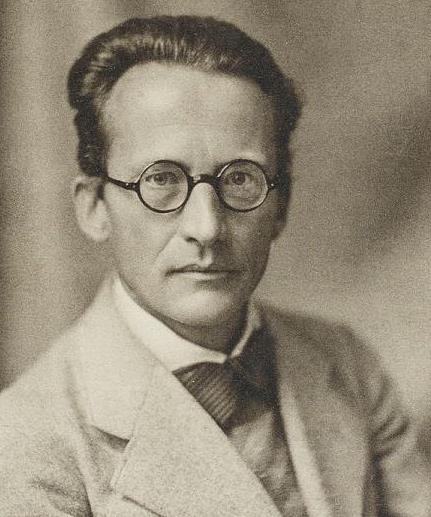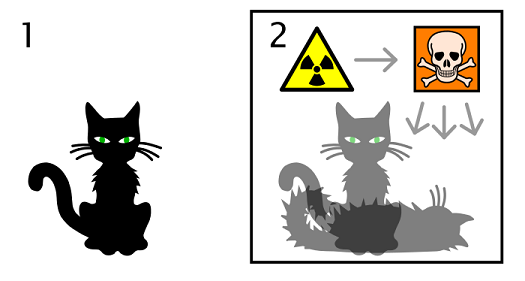Schrödinger's Cat

Scientists struggled to make sense of the results of the double slit experiment. The observer effect went against basic ideas in classical mechanics. They came up with different ways of thinking about the experiment, and how it fit into physics as a whole. These ways of thinking are called quantum interpretations.
When the experiment was first done, the most popular interpretation was the Copenhagen interpretation. This interpretation says that subatomic particles exist in superposition before being observed. Superposition is a mixture of all of a particle's possible states. When the particle is observed, it "collapses" into one of these states. That's why particles in the experiment act normally while being observed, but strangely when they aren't.
While the Copenhagen interpretation was popular, some scientists disagreed with it. One of these people was Erwin Schrödinger, a physicist from Austria. Schrödinger thought this interpretation was vague and could lead to odd results. He came up with a thought experiment to challenge it: Schrödinger's cat.
The Experiment
In this hypothetical experiment, a cat is trapped in a box. A device in the box is set up so that when turned on, it will release poisonous gas and kill the cat. Only a quantum event, like an electron passing by a detector, can activate the device. Since the cat's fate is connected to a quantum event, the rules of the Copenhagen interpretation say that the cat would be in superposition: it would be alive and dead at the same time.

Schrödinger thought a cat being alive and dead at the same time was silly. He argued that the Copenhagen interpretation was incomplete since it could not account for this. As time went on, scientists developed other interpretations of quantum physics. Many of them avoid the problem of Schrödinger's cat. Some even consider the alive/dead superposition to be real! These days, Schrödinger's cat is very famous. The thought experiment has come to represent quantum physics in pop culture.